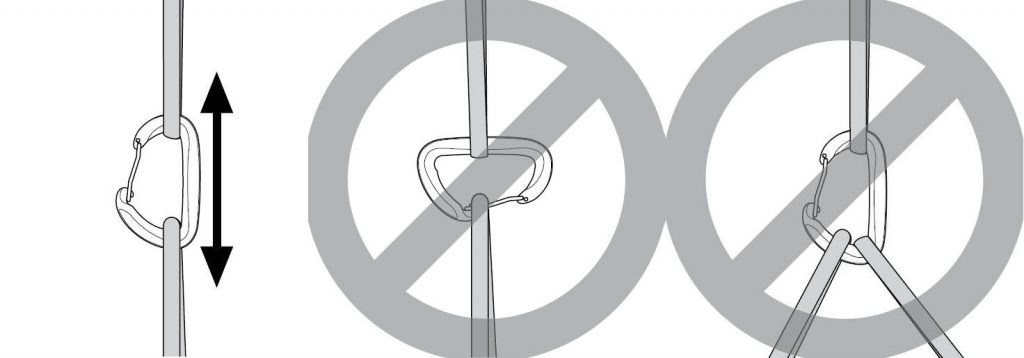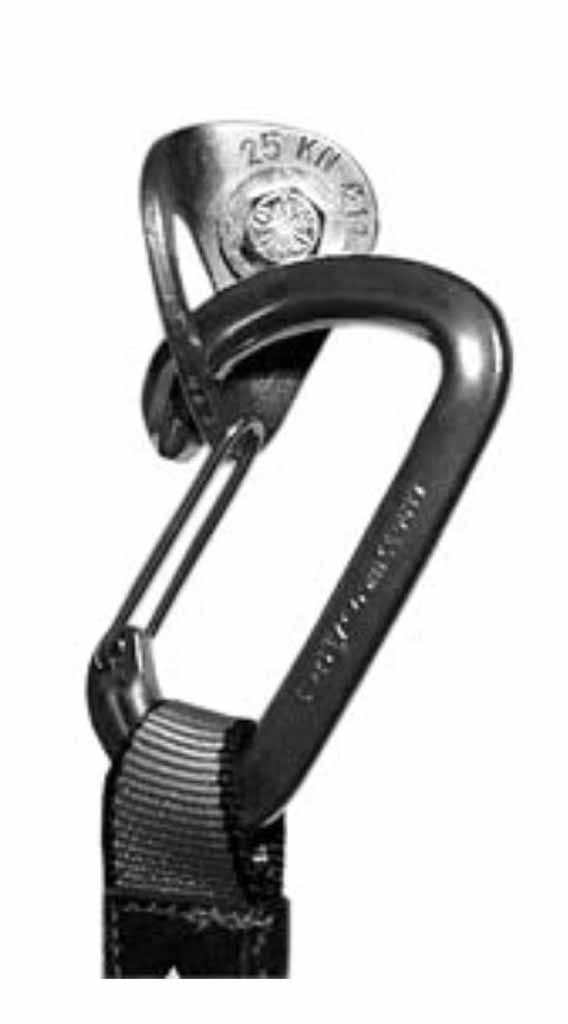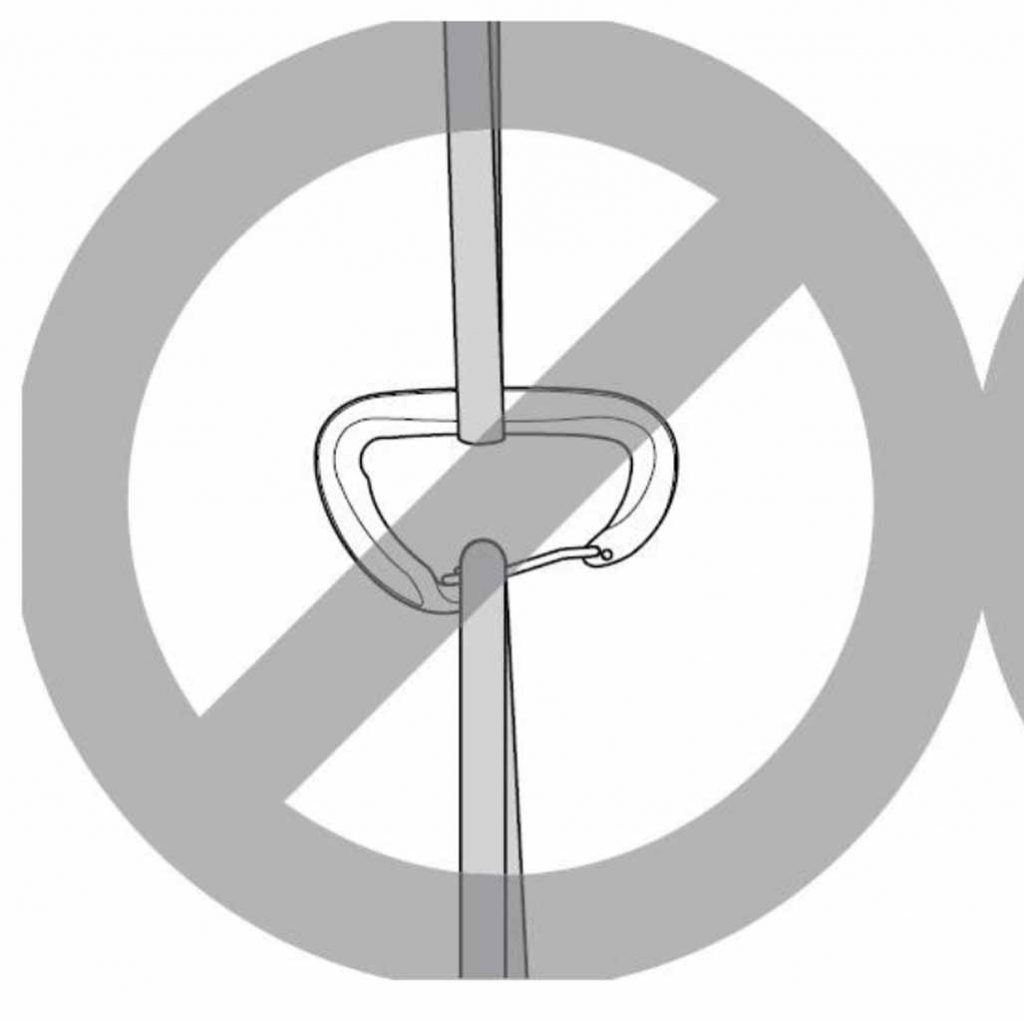Table of Contents
How a rock climbing carabiner works
What it means to cross load a carabiner – detailed explanation
Now lets discuss a cross load. The middle picture shows a cross load. Any force in this direction is marked on the carabiner with a left right arrow. A carabiner can usually take a considerably smaller load in this rotated direction than in the main loading direction. It comes down to the design of the carabiner: In this direction, there is less material to support the load.
The gate of the carabiner takes some load too, even if you load the carabiner in the main direction. And that’s why you will find another symbol on the carabiner for this. It indicates the possible load when the gate is open. It’s usually much less than with a closed gate, as an open gate cannot load force.
The gate is also part of the reason why the maximum loading force for a a crossload is so low. For the case that the force pulls inwards, the gate is only held in place by the locking sleeve and nothing else. And as a carabiner is only as strong as it’s weakest part, it means you have a low strength when load goes in this direction. It’s higher when you load outwards, as the locking sleeve and the gate itself pushes against the rest of the carabiner in this case.

Other bad loading scenarios: Tri-Axial loading and nose-hooked carabiners
Another weak point of a carabiner is when you load in directions completely away from the spine. You can find this scenario in the right picture. It’s described in more depth here. The load a carabiner takes in this direction can be even weaker than a cross load. The same applies to the so called nose-hooked carabiner.
What’s a nose-hoked carabiner?

A nose-hooked carabiner happens when your contact point squeezes open the gate at the nose of the carabiner. It’s a really bad situation, which can result inf carabiners failing at less then 10% of their rated closed gate strength. For our example this is around 227 kg of a load hanging in free air. Source here. This amount of force can happen if you have even just a small fall or bounce test
Why is a nose-hooked carabiner so bad?
Why is the carabiner’s breaking strength all of a sudden so low when nose-hooking it? It’s because this scenario combines an open gate with the design of the carabiner and a weird position for the force to attack. By putting load on it now, you basically create a cantilever that pulls the carabiner basket off of the bolt hanger.
As the load is not in line with the spine axis, which is the main direction to load the carabiner, the carabiner becomes excessively twisted and torque builds up in the material. It then breaks at the weakest point, which is the upper part like shown in the picture.

Tips to use a carabiner safely to avoid cross-loading and other dangerous loads
If you want to be safe, you must avoid the scenarios from above. Focus on two things:
1 . Always ensure that the carabiner has a closed gate when it is loaded
If you have a screwing lock sleeve, make sure to screw it closed when you place the carabiner. Make also sure that you have no rope etc. wound up around the screw – it could accidentally open the carabiner. If you use a screw-lock carabiner on your belaying device, make sure to turn the screw lock side away from moving parts – aka your hands handing in or out the rope. For non-screw carabiners, place the carabiner in a way that loads are not opening the gate.
2. Place the carabiner correctly in the direction of the load
This makes sure to avoid loading it from more than one direction. Never load the carabiner in opposite directions, try to avoid tri axis loading as much as possible. If you build equalized anchors, try to move the anchors as close together as possible to minimize off-axis loading
3. Never place a loaded carabiner on an edge or ledge
Placing a carabiner on a ledge will basically break the carabiner with the force of the ledge pushing against it, creating lots of torque and twist.
4. Avoid bulky knots around the carabiner
Bulky knots can lead to off-axis loading too, if you want to know more about it read here.
Conclusion
If you liked this article, make sure to read my other articles about top rope anchors, how to built perfect anchors, the best climbing shoes of 2020, and why should always wear a helmet when rock climbing. Feel free to leave me a comment too, if you have suggestions and ideas.

